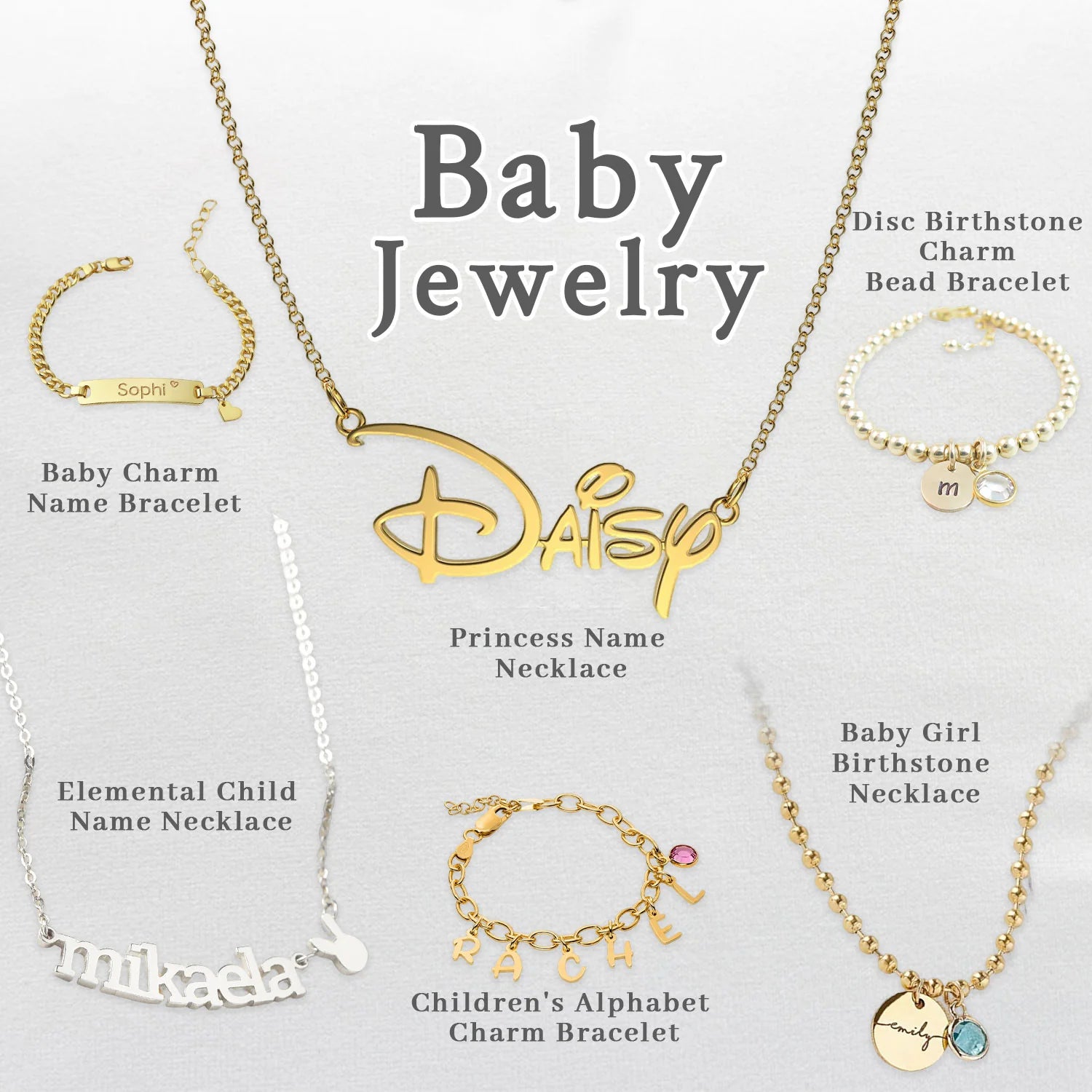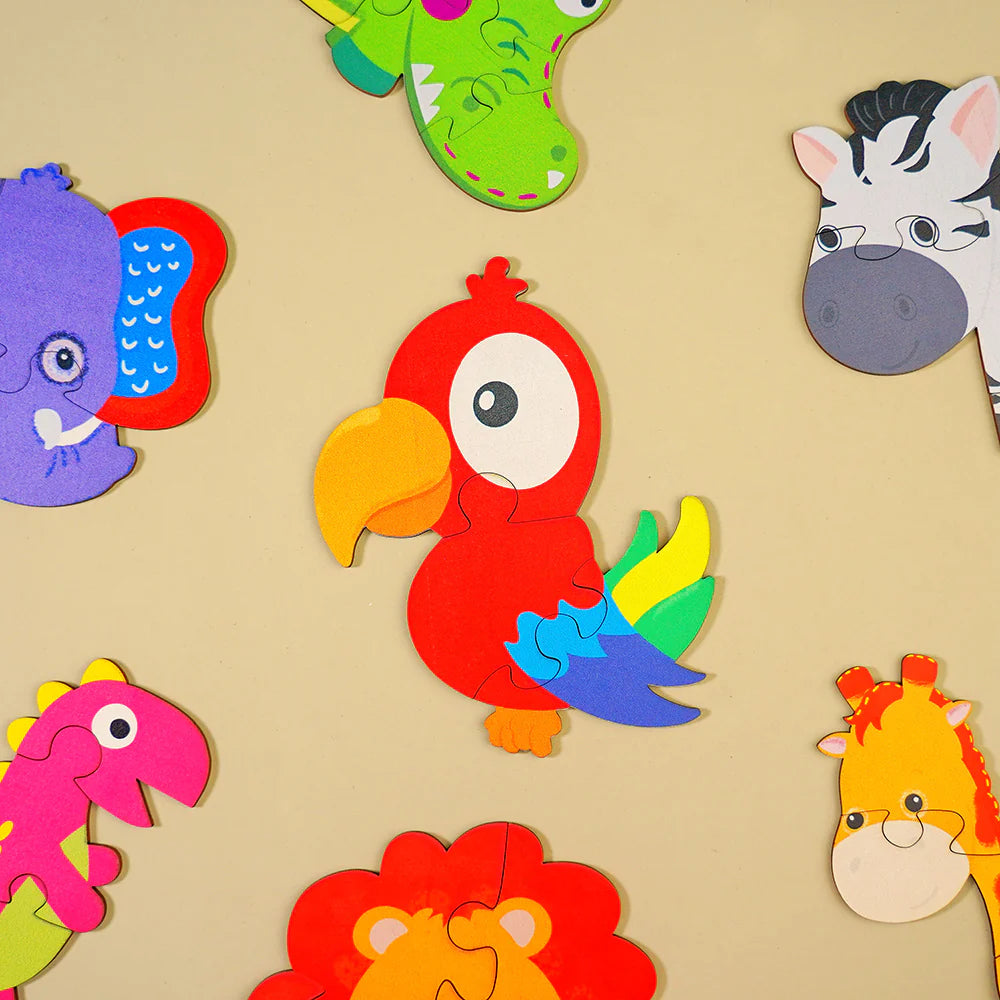7-Day Healthy Meal Planning Guide for Children 6 to 24 Months of Age
Aug 02, 2024
At about 6 months of age, infants begin eating semi-solid foods. By about two years of age, they will gradually change from a milk diet to eating a variety of family foods.
This article can help caregivers and parents prepare nutritious and appropriate foods for their babies during this period.

- Tools for preparing solid food for babies
Strainer & rod
For mashing food into fine puree, e.g. green leafy vegetables, root vegetables, liver.
Grater
For turning fruit and melon into mash-like consistency..
Bowl with grater edges
For mashing food such as root vegetables, melon, fish, tofu, liver.
Measuring Cup
For measuring rice and water. 1 cup equals to 240 ml.
Tablespoon (tbsp) & teaspoon (tsp)
Scissors
For mashing food and measuring food portions.
Blender
For preparing food purees or mashes in large quantities.
Tools for cutting cooked & raw food
Baby food preparation basics
Babies can gradually be introduced to different food textures between 6 and 24 months of age.
Age | Food |
About 6 months | Smooth puree |
7 to 8 months | Thick puree and mashed food |
9 to 11 months | Mashed food with small lumps, e.g thick congee with finely minced meat and mashed vegetables |
1 to 1.5 years | Soft rice, finely chopped meat and vegetables |
1.5 to 2 years | Family food, chopped into smaller pieces |
Children vary in their chewing ability. Parents should adjust the food texture to suit your own child.
(1) Infant cereal
Method
- Step 1: Put infant cereal powder into a bowl.
- Step 2: Add breastmilk or formula milk into the infant cereal powder a little at a time, and mix well with a spoon.
Useful tips
- Some infant cereal contains milk powder. Add water instead of milk.
- Refer to the instructions on the package for the proportion of milk and cereal powder to use in preparation. You can vary the amount of water or milk added to prepare the texture that best suits your baby.
- Fruit, vegetable puree or other food mashes can be added to infant cereal .
(2) Congee and soft rice
Basic method for cooking congee
- Step 1: Wash rice and soak in water for 1 hour.
- Step 2: In another pot, bring water (see "Useful tips" below) to a boil. Add in the soaked rice. Bring it back to a boil over high heat.
- Step 3: Once the mixture boils, turn to low-medium heat and simmer until the rice turns soft and breaks up. Stir occasionally.
- Step 4: Continue simmering until the desired consistency is reached.
Useful tips: Change the amount of water and rice used to get congee and rice of different textures!
Type of Congee or RiceAmount of riceAmount of waterThin congeehalf cup ricefive cups waterCongeehalf cup ricethree and a half cups waterSoft ricehalf cup ricetwo cups waterAdult ricehalf cup riceone cup water
(For reference only)
(3) Leafy vegetable puree/chopped leafy vegetable
Method
- Step 1: Wash the vegetables thoroughly under clean running water.
- Step 2: Blanch the vegetables in boiling water for 1 to 3 minutes. Drain in sieve. Do not feed babies the water used for cooking vegetables.
- Step 3: On a cutting board for cooked food, remove the stems so that only the leafy part remains.
- Step 4: Chop the leaves in different directions until the desired fineness is reached. The vegetable can now be used to cook baby food, e.g. vegetable congee.
- Step 5: To make vegetable puree, use a blender or a strainer to grind the chopped leaves.
- Step 6: The vegetable puree prepared should be consumed immediately after prepared.#
# Centre for Food Safety. (2020). The Truth about Nitrate and Nitrite in Vegetables.
https://www.cfs.gov.hk/english/multimedia/multimedia_pub/multimedia_pub_fsf_172_01.html
Useful tips: Blanching vegetables in boiling water for 1 minute helps remove harmful chemicals.
(4) Potato puree/mash
This method applies to sweet potato, pumpkin, carrot, other root and melon-type vegetables, e.g. hairy melon.
Method
- Step 1: Wash and peel the potato. Dice into small pieces.
- Step 2: Boil in water for 10 - 15 minutes until the potato pieces are soft enough for a fork to pass through them easily. Drain the water.
- Step 3: Mash the potato pieces with a fork or a spoon while they are still hot. Add a little warm water if they are too dry.
- Step 4: For a softer texture, add extra breastmilk/ formula milk/ water and mix well.
- Step 5: To make a fine potato puree, press the potato mixture through a strainer.
(5) Fruit puree/fruit slices
Fruit puree or mash
Choose fruits that are ripe and soft in texture, e.g. peaches, pears, bananas, some types of apples, avocados, papaya, etc.
Method 1: Use a grater
- Step 1: Wash the fruit and rub the skin under running water. Peel and cut into 2-4 pieces. Remove the seeds.
- Step 2: Grind fruit pieces with grater.
Method 2: Use a teaspoon
- Step 1: Wash the fruit. Cut into two halves and remove the core.
- Step 2: Scrape the fruit in one direction with a teaspoon to make fruit mash.
Useful tips: Put the mash in a strainer to filter out the lumps. This creates a finer texture for babies just starting to eat solid food.
Fruit slice
- Babies with front teeth can gradually bite through food. Parents may cut fruit into 2 to 3 mm thick slices for them as finger food.
- More fruit choices: watermelon, dragon fruit, mangoes, honey dew melon, plums and strawberries.
(6) Minced meat (chicken/beef/mutton/pork)
Method 1: Chopping
- Step 1: Wash a piece of meat and pat it dry.
- Step 2: On the cutting board for raw food, slice the meat into 1 mm thick pieces. When slicing, cut diagonally across and through the fibres.
- Step 3: Cut meat slices into fine strips.
- Step 4: Cut meat strips into fine lumps, and chop in different directions.
- Step 5: When cooking, add water to meat and stir well in the pot to avoid forming lumps.
Useful tips: Chop the meat less finely when your baby can chew better.
Method 2: Use a blender
- Step 1: Boil or steam meat slices.
- Step 2: On a cutting board for cooked food, cut the meat into 0.5—1 cm dices.
- Step 3: Put the meat dices into a blender. Add water until the meat is just covered.
- Step 4: Turn on the blender, and blend to the desired texture. Pause the blender to check the texture regularly.
- Step 5: This method prepares portions for several meals. Cooked minced meat should be kept in covered ice molds and stored in the freezer for a maximum of 7 days.
Appropriate food textures for babies aged 6 to 24 months
Around six months, babies can gradually be introduced smooth and runny puree food to thick puree and mashed food. Nine to eleven months babies can eat mashed food with small lumps. One to two years child can eat soft rice, finely chopped meat and vegetables, and even family food which chopped into smaller pieces.
How to design recipes for babies
Through a variety of foods in a baby's menu, he will get the nutrients needed for his growth. This also helps him adapt to eating family food.
(1) Choosing foods to make meals for babies
- Include 4 main food groups
Include grains, vegetables, fruit and meat. Milk products can also be included.
- Choose a variety of food
Choose a variety of foods in order to expose baby to different flavors.
Within each food group, try the food in turn, e.g. fruit and vegetables of different colours.
- Choose an appropriate food texture
Chicken is softer and less chewy than beef. When trying meat, give chicken first, then beef.
- Serve more grains, vegetables and fruit
Offer grains and vegetables in larger quantities than meat. Use vegetable oils, e.g. canola oil.
- Choose food from the family's dishes
For babies to share food with the family, reduce salt and seasoning used in cooking, or take out the baby's portion before seasoning.
(2) How to design babies' one-day menu
7-11 month-old babies
From 7 to 11 months, a baby gradually adapts to solid food. When a baby can get enough from a meal containing grains, vegetables, meat and oil, he does not need milk to top up. The meal can replace one milk feeding.
A one-day menu for a 7-8 month-old baby
| Breastmilk or Formula milk | Breastfeed as needed or Formula milk (3 to 4 times) |
| Main meals of solid food | 1 to 2 meals Half bowl congee Half to one tbsp meat One to two tbsps vegetables One tbsp fruit puree * Half to one tsp oil |
| Snack | 1 to 2 meals Baby biscuits (occasionally) or fruit puree |
A one-day menu for a 9-11 month-old baby
| Breastmilk or Formula milk | Breastfeed as needed or Formula milk (2 to 3 times) |
| Main meals of solid food | 2 to 3 meals Half to one bowl congee One tbsp meat Two tbsps vegetables Two tbsps fruit puree * Half to one tsp oil |
| Snack1 to 2 meals | Bread/sweet potato strips/baby biscuits or vegetable stick or fruit |
Useful tips: Choose food from the major food groups (Food exchange table) and match the quantities to design a menu for your baby.
1 to 2 year-old young children
- Arrange 3 main meals and 2 snacks a day.
- Daily food requirements are about:
| Grains | 1 to 2 bowls of rice |
| Vegetables | 4 to 8 tablespoons |
| Fruits | one forth to half bowl |
| Meat, fish, eggs & beans | 2 to 4 tablespoons |
| Milk & milk product | 360 to 480 ml |
Note: Medium sized rice bowl = 250 to 300 ml; 1 Chinese tablespoon = about 20g chopped cooked vegetables, raw minced meat/fish
Useful tips: From the major food groups (Food exchange table), choose food and match the quantity to plan a one-day menu for your child.
A one-day sample menu for a 1 to 2 year-old child
| Breakfast | alf bowl cornflake + a small cup (120 ml) milk + 2 strawberries |
| Morning snack | A small cup yoghurt |
| Lunch | ½ bowl udon + 1 to 2 tablespoons chicken + 2 tablespoons cabbage, 2 tablespoons tomato |
| Afternoon snack | 1 piece bread or a small cup (120 ml) milk + one forth apple |
| Dinner | ½ bowl soft rice + 1 to 2 tablespoons fish + 2 tablespoons broccoli, 2 tablespoons carrot + a few sections of orange |
| Evening snack(if need) | A small cup (120 ml) milk |
Food exchange table
You can choose foods from each main group below, and combine them to make a meal. The portion conversion is for your reference.
| Food Quantity | Suggestion of food exchange |
| Half bowl of rice grains |
|
| 1 heaped Chinese tablespoon of pork/ beef/ chicken |
|
| Calcium content of 120 ml milk | 1 slice cheese or about 100g yoghurt |
Note: Medium sized rice bowl = 250 to 300 ml; 1 Chinese tablespoon = about 20g chopped cooked vegetables, raw minced meat/fish
Pasteurized milk products can be given to babies aged 6 to 11 months, but it should not replace breastmilk or formula milk as the main source of food.
Plain biscuits are added with sugar and some may contain trans fat.
Avoid eating them frequently. Serve a small portion as a snack occasionally.
Fruits and vegetables commonly available in the market
Vegetables
Choy sum, bok choy, Chinese spinach, spinach, Shanghai white cabbage, lettuce, cabbage, Chinese cabbage, broccoli, cauliflower, honey peas, tomatoes, bell peppers, pumpkin, eggplant, hairy melon, zucchini, winter melon, carrots, mushrooms, etc.
Fruits
Apples, plums, strawberries, oranges, papaya, mandarin oranges, mangoes, bananas, pears, kiwifruit, blueberries, grapes, cherries, etc.
One-week menu and recipes for 7-8 month-old babies
At 6 months old, your baby can begin trying small amounts of puree. Once your baby is used to purees, at around 7 months old, you can consult the menus below to help you design meal plans for your baby.
Monday
- Lunch: Rice cereal with choy sum and egg yolk
- Snack: Fruit puree or Baby biscuits
(occasionally) - Dinner: Rice cereal with papaya puree
Tuesday
- Lunch: Spinach and fish puree congee
- Snack: Fruit puree or Baby biscuits
(occasionally) - Dinner: Pumpkin and tofu congee
Wednesday
- Lunch: Mashed sweet potato and egg yolk congee
- Snack: Fruit puree or Baby biscuits
(occasionally) - Dinner: Rice cereal with fish and carrots
Thursday
- Lunch: Tofu and banana rice cereal
- Snack: Fruit puree or Baby biscuits
(occasionally) - Dinner: Winter melon, tomato and pork liver congee
Friday
- Lunch: Chicken and green pea congee
- Snack: Fruit puree or Baby biscuits
(occasionally) - Dinner: Cabbage and minced pork congee
Saturday
- Lunch: Mashed potato and broccoli with minced beef
- Snack: Fruit puree or Baby biscuits
(occasionally) - Dinner: Hairy melon and chicken puree congee
Sunday
- Lunch: Tomato and fish puree congee
- Snack: Fruit puree or Baby biscuits
(occasionally) - Dinner: Spinach and beef congee
Useful tips: Serve a small amount of fruit puree at lunch and dinner
Pumpkin and tofu congee
Ingredients (two servings)
- Three heaped tablespoons pumpkin (skin and seeds removed, cut into 1 cm cubes)
- Three heaped tablespoons tofu
- 1½ bowls thin congee
- 1 teaspoon vegetable oil
Method
- Step 1: Steam pumpkin cubes for ten to fifteen minutes until soft. Mash pumpkin and tofu together using a fork. Set aside.
- Step 2: Bring congee to a boil. Stir in mashed tofu and pumpkin. Lower to medium heat. Add vegetable oil and cook for another two minutes and serve.
Time-saving tips
- Vegetables like pumpkin, sweet potatoes, carrots, potatoes, etc. can be cooked, mashed and frozen in advance. First put the food mash into an ice mold, cover well and then put it into a zip plastic bag. Label the preparation date. The mash can be stored in the freezer for up to one week.
- When using the mash, take the portion required. Defrost it in a bowl inside the refrigerator and reheat it thoroughly to boiling. You can also cook the frozen food mash directly until it is steaming hot.
Recipe variations
- Pumpkin can be replaced by melon-type and root vegetables, such as winter melon, palm melon, sweet potatoes, carrots, etc.
Rice cereal with choy sum and egg yolk
Ingredients
- Six level tablespoons infant rice cereal
- 160 ml (five and a half oz) breastmilk or formula milk
- Five pieces choy sum leaves
- Half egg yolk
Method
- Step 1: Wash the choy sum. Blanch in water. Drain and chop finely and grind through a strainer to make a smooth vegetable puree.
- Step 2: Place an egg in a pot. Add water and bring to a boil. Cook the egg for ten minutes until done. Remove the egg shell and take out half of the egg yolk.
Mash with a fork and mix with a small amount of water to form a smooth puree. - Step 3: Mix milk with baby rice cereal. Add vegetable and egg yolk puree, and mix well to serve.
Nutrition tips
- Infant rice cereal can be replaced by cereal made by other grains (read the nutrition label on the package to check if iron is added).
Key point
- Use a fork to mash the egg yolk.
- Add a small amount of warm water to create a smooth texture.
Chicken and green pea congee
Ingredients (2 servings)
- Two heaped tablespoons skinless chicken meat (minced)
- Two heaped tablespoons green peas (fresh or frozen)
- One and a half bowls congee
- One teaspoon vegetable oil
Method
- Step 1: Cook green peas well in boiling water. Drain. Push green peas through a strainer using a spoon to remove the skin and make a puree.
- Step 2: Bring the congee to a boil. Add minced chicken and stir well with chopsticks so that the meat pieces do not stick together. Cook until the chicken is done.
- Step 3: Add green pea puree and vegetable oil. Bring the mixture back to boil. Serve.
Nutrition tips
- Meat broth contains very few nutrients. To ensure that baby gets the maximum amount of nutrients from meat, e.g. iron, feed him with meat which is minced finely to an appropriate texture.
Cooking tips
- Fibrous vegetables and dry beans (legumes) are good for your baby. You can mash the boiled vegetables/beans by using a strainer with a tablespoon to create a smooth texture for your baby.
Key point
- Use a spoon to mash the green peas through a strainer.
Winter melon, tomato and pork liver congee
Ingredients
- Two pieces winter melon (skin removed, cut into three cm cubes)
- One eighth tomato (small)
- One slice pork liver (to make one tablespoon of puree)
- Half to one bowl thin congee
Method
- Step 1: Remove the seeds from the tomato.
- Step 2: Boil the winter melon and tomato in water until soft. Drain.
- Step 3: Mash the winter melon with a fork.
- Step 4: Remove the skin from tomato. Chop finely or grind through a strainer to make a puree.
- Step 5: Steam the pork liver until it is done. Mash with a fork or grind through a strainer to make a smooth puree.
- Step 6: Bring congee to a boil. Add melon, tomato and liver puree and boil for 3 minutes.
Serve.
Nutrition tips
- Liver is very rich in iron and vitamin A. Both nutrients are essential for the health and development of infants and children. However, too much vitamin A is harmful. Liver should not be eaten more than once every two weeks.
- Iron from meat, fish and eggs can be easily absorbed by the human body. The leafy parts of dark green leafy vegetables, e.g. spinach, choy sum, Chinese spinach, etc., are also rich in iron.
- To get the maximum amount of iron from vegetables, include vitamin C-rich fruit in a meal, such as oranges, kiwifruits or strawberries.
Key point
- Mashing will be difficult if liver is overcooked.
One-week menu and recipes for 9-11 month-old babies
Parent-child menus
9-11 month-old babies can start sharing food with their families. This does not only help babies adapt to the family's diet, it also saves time for busy parents.
Monday
- Baby's lunch: Tomato & minced beef udon in clear broth
- Family's Lunch: Stir-fried tomato & beef with udon in clear broth
- Snack: Cheese slice + Apple puree
- Baby's dinner: Tofu & pork liver congee with vegetable puree
- Family's dinner: Steamed & stuffed tofu with minced pork + Bok choy & pork liver in soup
Tuesday
- Baby's lunch: Chicken & hairy melon thick congee/soft rice
- Family's Lunch: Hairy melon & chicken stir-fry
- Snack: Watermelon cubes + Biscuits
- Baby's dinner: Alphabet pasta with fish, tomato & potato
- Family's dinner: Fish soup with tomato & potato + Stir-fried kale
Wednesday
- Baby's lunch: Steamed egg with tofu & minced beef + Vegetable thick congee/ soft rice
- Family's Lunch: Steamed egg with tofu & minced beef + Stir-fried bok choy
- Snack: Yoghurt with mango puree
- Baby's dinner: Eggplant & minced pork in oatmeal porridge/ soft rice
- Family's dinner: Braised eggplant with minced pork & garlic + Stir-fried honey peas
Thursday
- Baby's lunch: Water chestnut, pork & lettuce congee/ soft rice
- Family's Lunch: Water chestnut pork patty + Blanched lettuce
- Snack: Steamed egg custard with papaya puree
- Baby's dinner: Beef & choy sum in thick congee/ soft rice
- Family's dinner: Stir-fried choy sum with beef + Soy chicken, mushroom black fungus stew
Friday
- Baby's lunch: Mashed potato with mixed beans & cheese + Broccoli
- Family's Lunch: Mixed bean salad, braised broccoli
- Snack: Sweet potato sticks
- Baby's dinner: Fish & mixed vegetables thick congee/ soft rice
- Family's dinner: Steamed grass carp + Stir-fried Shanghai white cabbage + Sweet corn & carrot soup with lean pork
Saturday
- Baby's lunch: Tofu, seaweed & minced pork thick congee/ soft rice
- Family's Lunch: Rice in soup with tofu, seaweed and meatballs
- Snack: Orange + Biscuits
- Baby's dinner: Golden-thread fish & broccoli congee/ soft rice
- Family's dinner: Pan-fried Golden-thread fish + Stir-fried broccoli with garlic
Sunday
- Baby's lunch: Oatmeal with banana & milk
- Family's Lunch: Oatmeal with milk + Banana + Tomato & egg sandwich
- Snack: Tofu pudding
- Baby's dinner: Pumpkin & minced pork noodles
- Family's dinner: Braised pork ribs & pumpkin with garlic & fermented soy bean + Choy sum & noodle in soup
Useful tips: Serve fruit at lunch and dinner
Tofu, seaweed & minced pork thick congee or soft rice
Ingredients
- Three tablespoons tofu (mashed)
- Two heaped tablespoons sushi seaweed (torn into pieces)
- One heaped tablespoon pork (minced)
- One bowl congee or half bowl soft rice
- Half teaspoon sesame oil
Method
- Step 1: Add a small amount of water to the minced pork and stir.
- Step 2: Bring congee to a boil or re-heat soft rice. Add minced pork and stir. Lower to medium heat and cook until pork is done.
- Step 3: Add seaweed and mashed tofu. Mix well. Add sesame oil and cook for another 2 minutes and serve.
Nutrition tips
- Iodine intake is essential for the development of the nervous system. A small amount of iodine-rich food is enough to meet this need. Kelp and seaweed are rich in iodine. Seawater fish and shellfish such as oysters, mussels, scallops and shrimp also contain iodine. Milk and eggs also provide some iodine.
Key point
- Mix minced pork with a small amount of water.
Pumpkin and minced pork noodles
Ingredients
- Two to three heaped tablespoons pumpkin (skin and seeds removed, cut into 1 cm cubes)
- One to one and a half heaped tablespoons pork (minced)
- Half bunch plain Chinese noodles (also called Fukien noodles, one bunch makes two servings)
- One small slice ginger (optional)
- One and a half bowls water
- Half teaspoon vegetable oil
Method
- Step 1: Cook noodles in boiling water for five minutes. Drain and set aside.
- Step 2: Heat vegetable oil in pot, lightly fry the ginger and pumpkin. Add 1½ bowls of water, bring to boil. Simmer for 3 - 5 minutes over medium heat until the pumpkin is softened and becomes pumpkin soup.
- Step 3: Add minced pork and noodles to the soup. Cook until the pork is done.
- Step 4: Cut noodles into one cm long strips before serving.
Nutrition tips
- Noodles, pasta, rice and bread are all examples of grains and cereal products. They provide energy for the human body. To make food more attractive, choose noodles or pasta with different colors and shapes.
Cooking tips
- To save time and avoid wasting food, design the family's meals based on what is suitable for your baby. For example, if the baby's meal uses pumpkin and pork as ingredients, the family dish could be braised pork ribs and pumpkin with garlic and fermented soy beans.
Key point
- Cut noodles into one cm long strips to avoid choking.
Alphabet pasta with fish, tomato and potato
Ingredients (4 servings)
Family's dish — Fish soup with tomato & potato:
- Three pieces tomato (medium-sized, cut into pieces)
- One piece potato (medium-sized, peeled, cut into chunks)
- Three pieces big eyes (skin removed)
- 1.5L boiling water, 1 slice ginger
- Two teaspoons vegetable oil
Baby's dish:
- Half to one bowl alphabet pasta
Method
- Step 1: Wash big eyes and pat it dry.
- Step 2: Heat the oil in a pan. Add the ginger and pan-fry the fish for five minutes. Remove from pan. Remove one tablespoon of fish flesh from the back of the fish for baby's dish.
- Step 3: Place the remaining fish into a fish bag. Tie up and place the bag in a large pot of boiling water together with the tomato and potato. Cover with a lid and cook over medium heat for thirty to forty minutes. Season with salt (about one fourth tsp) if needed.
Baby's dish — Alphabet pasta with fish, tomato & potato:
- Step 1: Cook the alphabet pasta until soft in boiling water. Rinse under cold water and drain. Set aside.
- Step 2: Remove the bones from the fish flesh that you reserved earlier (step two above)
and crush into pieces. - Step 3: Take out the tomato and one third bowl potato from the soup. Crush into small pieces with a fork.
- Step 4: In a pot, add cooked pasta with some soup. Bring it back to a boil. Add tomato, potato and fish pieces. Mix and serve.
Cooking Tips
- Big eyes is good for making soup. Some other fish soup examples are:
- Mustard green and tofu fish soup;
- Papaya and grass carp soup;
- Carrot, tomato, onion and fish soup.
Mashed potato with mixed beans and cheese
Ingredients:
- Half bowl potato (peeled, cut into pieces)
- Two heaped tablespoons mixed beans (canned cooked kidney beans, chickpeas)
- Half slice whole fat cheese (cut into pieces)
- Appropriate quantity of hot water or whole fat milk (breastmilk/ formula milk)
Method
- Step 1: Cook mixed beans in boiling water until softened. Drain and mash with a fork or spoon. Set aside.
- Step 2: Cook the potato in boiling water for 10 to 15 minutes until soft. Drain. Mash with a fork. Add an appropriate amount of hot water/milk and mix until smooth.
- Step 3: While the mashed potato is still hot, add cheese and mashed beans. Mix until the cheese melts. Serve.
Nutrition tips
- The salt content of different brands of cheese varies. Compare the sodium (i.e. salt) content per 100g on the nutrition label and choose a product with a lower sodium content.
Key point
- Mash mixed beans with a spoon.
Golden thread fish and broccoli congee/soft rice
Ingredients (Two servings)
Family's dish—Pan-fried golden thread fish:
- One or two golden thread fish
- One slice ginger
- Three teaspoons vegetable oil
Stir-fried broccoli with garlic:
- Two bunches broccoli (cut into chunks)
- One teaspoon garlic (chopped)
- Two teaspoons vegetable oil
- One fourth teaspoon salt
Baby's dish:
- Two third bowl congee or half bowl soft rice
Method
Pan-fried golden thread fish:
- Step 1: Wash golden thread fish and pat it dry.
- Step 2: Heat oil in a pan. Add ginger and pan-fry fish until done and golden on both sides.
Remove from the pan. - Step 3: Take one to two tablespoons of fish flesh from the back of the fish and remove the bones carefully. Crush into small pieces in a grinding bowl. Set aside.
Stir-fried broccoli with garlic:
- Step 1: Blanch broccoli in boiling water until half-cooked, drain. Take two to three florets and chop finely for baby's dish.
- Step 2: Heat the oil in a pan. Add the garlic and broccoli, and stir-fry until done. Season with salt and serve.
Baby's dish—Golden thread fish & broccoli congee/soft rice:
- Step 1: Bring the congee to a boil or reheat soft rice.
- Step 2: Add fish and broccoli pieces.
- Step 3: Cook until soft and serve.
Nutrition tips
- DHA is a type of fatty acid that aids in the development of the nervous system and vision. The main food sources are seawater fish, such as salmon, golden thread fish, big eyes and sardines.
- The human body converts essential fatty acids from vegetable oil (e.g. canola oil, sunflower oil) into DHA. You can use a suitable amount of vegetable oil when cooking for your baby.
Sweet potato sticks (snack)
Ingredients
- Appropriate quantity of sweet potatoes
Method
- Step 1: Wash the sweet potatoes. Cut into thick slices. Steam with their skin for around 20 minutes until tender.
- Step 2: Remove potato skin.
Cut into 2 X 5 cm sticks or interesting shapes with knife or cookie cutters. Allow your baby to hold the pieces and self-feed.
Cooking tips
- Colorful vegetables such as pumpkin, potato, taro, carrots, bell peppers and broccoli are suitable for making snacks. Cook until tender and cut into strips as finger food. This will help increase baby's vegetable intake.
Oatmeal with banana and milk
Ingredients
- Two heaped tablespoons quick cooking oats
- One fourth bowl breastmilk or formula milk
- One fourth piece banana
- Half bowl water
Method
- Step 1: Add oats and water in a pot, and heat over low heat. Keep stirring. Bring to a boil and cook for about two minutes until the oatmeal becomes porridge-like. Remove from heat.
- Step 2: Add breastmilk or formula milk to cooked oats. Mix well.
- Step 3: Mash banana using a fork and add to the oats. Mix to serve.
Cooking tips
- Oats belong to the grain family and are a good choice for breakfast/snack. To make a sweet dish, mix with chopped fruit or fruit puree, such as blueberries or grapes. At lunch or dinner, oatmeal can be served with vegetables, minced meat or eggs.
One-week menu and recipes for 1-2 year-old young children
Parent-child menus
Young children of 1 to 2 years old can start sharing food with their families. This does not only help young children adapt to the family's diet, it also saves time for busy parents.
Monday
- Breakfast: Bread and milk
- Morning snack: Apple slices
- Lunch: Steamed egg with mushroom & tofu (served with choy sum & rice)
- Afternoon snack: Milk
- Young child's dinner: Grass carp & Chinese spinach leaves with rice
- Family's dinner: Steamed grass carp and stir-fried Chinese spinach leaves
- Evening snack: Fruit (or milk if needed)
Tuesday
- Breakfast: Strawberry & milk with cornflakes
- Morning snack: Orange slices
- Lunch: Winter melon, lentil & minced pork soup, served with rice
- Afternoon snack: Raisin bread and cheese slices
- Young child's dinner: Zucchini, carrot & beef with rice
- Family's dinner: Pan-fried zucchini, carrot and beef rolls & Stir-fried kale
- Evening snack: Fruit (or milk if needed)
Wednesday
- Breakfast: Egg & sweet corn congee
- Morning snack: Papaya sticks with yoghurt
- Lunch: Tomato, tofu & fish soup with rice
- Afternoon snack: Seasonal fruits and milk
- Young child's dinner: Choy sum & chicken with brown rice
- Family's dinner: Stir-fried choy sum & chicken and brown rice and hairy melon,vermicelli, dried shrimp stew
- Evening snack: Fruit (or milk if needed)
Thursday
- Breakfast: Whole meal bread and boiled egg
- Morning snack: Peach cubes and milk
- Lunch: Chicken & bell peppers with rice
- Afternoon snack: Peanut & cowpea soup
- Young child's dinner: Shrimp & broccoli "Risotto"
- Family's dinner: Stir-fried shrimp & broccoli and potato, carrot & pork stew
- Evening snack: Fruit (or milk if needed)
Friday
- Breakfast: Raisin bread and milk
- Morning snack: Fresh fruit cup with yoghurt
- Lunch: Rice noodles in soup with spinach, tofu & pork
- Afternoon snack: Cheese sandwich
- Young child's dinner: Pan-fried salmon with cauliflower & shell pasta in pumpkin sauce
- Family's dinner: Pan-fried salmon with cauliflower & shell pasta in pumpkin sauce
- Evening snack: Fruit (or milk if needed)
Saturday
- Breakfast: Oatmeal with banana and milk
- Morning snack: Water- melon cubes and milk
- Lunch: Choy sum & pork udon in soup
- Afternoon snack: Seaweed & mung bean sweet soup
- Young child's dinner: Steamed pork with oats & Chinese wolfberry, cabbage in rice
- Family's dinner: Steamed pork with oats & Chinese wolfberry and stir-fried cabbage
- Evening snack: Fruit (or milk if needed)
Sunday
- Breakfast: Butter roll and milk
- Morning snack: Sweet potato sticks
- Lunch: Tomato & mixed beans spiral pasta
- Afternoon snack: Seasonal fruits and yoghurt
- Young child's dinner: Beef stew with mushroom, beancurd sticks & vermicelli and brown rice & bok choy
- Family's dinner: Beef stew with mushroom, beancurd sticks & vermicelli and brown rice & bok choy
- Evening snack: Fruit (or milk if needed)
Useful tips: Serve fruit at lunch and dinner
Pan-fried salmon with cauliflower and shell pasta in pumpkin sauce
Ingredients
- Half bowl pumpkin (skin and seeds removed, cut into pieces)
- Two cauliflower florets
- Two slices salmon (about two tbsps)
- Two third bowl water
- One teaspoon cornstarch
- Half to one bowl shell pasta (cooked)
- Half teaspoon vegetable oil
Method
- Step 1: Steam pumpkin pieces and cauliflower florets until soft. Chop cauliflower into one cm cubes. Mash pumpkin. Set aside.
- Step 2: Heat oil in a pan, pan-fry salmon until golden on both sides. Break the fish into pieces with a spoon. Set aside.
- Step 3: To make pumpkin sauce:
- (1) Cook mashed pumpkin with some water;
- (2) In a bowl, combine cornstarch with two third bowl of water, mix well;
- (3) Add cornstarch mixture to pumpkin. Keep stirring. Cook until thickened. Set aside.
- Step 4: Put cooked shell pasta in a bowl. Add salmon pieces and cauliflower, pour pumpkin sauce and serve.
- Step 5: You may also add a few drops of lemon juice to reduce the fishy taste.
Healthy eating tips
- Serving sauce or soup made with mashed vegetables helps increase babies' vegetable intake. Tomatoes, bell peppers, spinach and green peas are good choices too. Add some milk or yoghurt to create a smoother texture.
Cooking Tips
- Instead of pan-frying, you can steam the fish. In addition to salmon, sole fillet and golden thread fish are also good alternatives.
Key point
- Pour in cornstarch mixture to thicken the pumpkin sauce.
Rice noodles in soup with spinach, tofu and pork
Ingredients (four servings)
Family's dish-Spinach, tofu & pork soup:
- Half catty spinach
- One block tofu
- Two taels pork (sliced)
- Four bowls water
Marinade:
- One teaspoon soy sauce
- Half teaspoon sugar
- One teaspoon cornstarch
Seasoning:
- One third teaspoon salt
- Two teaspoons vegetable oil
Child's dish:
- One bowl rice noodles (cooked and cut into two to five cm pieces)
Method
- Step 1: Slice the pork. Mix pork slices with marinade. Set aside.
- Step 2: Remove spinach roots. Wash the spinach. Blanch for one minute. Drain and set aside.
- Step 3: Add vegetable oil and salt into boiling water. Add spinach, tofu and pork slices. Cook until the pork is done.
Child's dish - Rice noodles in soup with spinach, tofu & pork:
- Step 1: Take one fourth portion of spinach, tofu and pork from (3) for child's dish. Cut spinach and pork into pieces(A).
- Step 2: Add 1 bowl of soup from (3). Mix with cooked rice noodles and (A) bring it to boil. Serve.
Nutrition tips
- Fresh tofu and pre-packed ones with E516 as ingredient stated in the food label are rich in calcium, as calcium sulfate is used as the solidifying agent.
- Dark green leafy vegetables are rich in calcium. Compared to spinach and Chinese spinach, the calcium in bok choi, choi sum, kale and mustard green, is more easily absorbed.
- It is a myth that eating spinach and tofu together causes kidney stones. There is no medical evidence for this. You may safely enjoy spinach with tofu.
Steamed egg with mushroom and tofu (served with choy sum and rice)
Ingredients (4 servings)
- Four fresh shiitake mushrooms
- One block tofu (cut into 1 cm cubes)
- Two eggs
- Half bowl water
- Two teaspoons vegetable oil
Baby's dish:
- Half bowl soft rice
- Two to four tablespoons choy sum
Method
- Step 1: Blanch fresh shiitake mushrooms for one minute. Drain and dice into half to one cm cubes.
- Step 2: Whisk eggs and add water. Mix well. Pour into a porcelain or metal dish that is suitable for steaming.
- Step 3: Add vegetable oil, shiitake mushrooms and tofu cubes evenly into the egg mixture. Steam for eight to ten minutes. Serve.
- Step 4: Take ¼ of the steamed egg as the child's meal. Serve with vegetables and ½ bowl of rice.
Healthy eating tips
- Babies over 1 year old can share family dishes with a soft texture. Take a portion from the family's daily vegetable dish, cut it into pieces and mix it with rice for your baby. Some babies like to have vegetable pieces served separately. This helps increase baby's vegetable intake. Pumpkin, broccoli and sweet corn are also suitable for making vegetable rice.
- Adding Chinese parsley, shiitake mushrooms, onion, chives, celery and basil to a dish can boost the natural flavor and reduce the use of salt, allowing the whole family to enjoy healthier diets.
Key point
- Put a chopstick between the pot and the lid so that bubbles can be prevented on the steamed egg.
Shrimp and broccoli "Risotto"
Ingredients (four servings)
Family's dish - Stir-fried shrimps & broccoli:
- Twelve fresh or frozen shrimps
- Two broccoli
- Two teaspoons vegetable oil
- A small amount of water
Marinade:
- Half teaspoon sugar
- One teaspoon soy sauce
- One teaspoon cornstarch
Seasoning:
- One teaspoon minced ginger
- One third teaspoon salt
Child's dish:
- Half bowl soft rice
Method
- Step 1: Remove the intestines from the shrimps. Rinse and pat it dry. Mix with marinade and set aside.
- Step 2: Wash the broccoli. Blanch for 1 minute. Set aside.
- Step 3: Heat vegetable oil in a pan. Add ginger. Stir in the shrimp and then the broccoli. Season with salt and stir-fry until done.
Child's dish—Shrimp & broccoli "Risotto":
- Step 1: Take one fourth portion of (3). Cut the shrimps and broccoli into small pieces.
- Step 2: In a pan, bring cooked rice and two to three tablespoons of water to a boil. Stir in the broccoli and shrimp pieces. Cook until the rice becomes soft and creamy. Serve.
Nutrition tips:
- Zinc is an essential mineral for growth. Foods that contain zinc include meat, fish, eggs, shellfish (e.g. shrimp), dried beans (e.g. red kidney beans) and nuts. A balanced diet ensures adequate zinc intake.
Cooking Tips
- Risotto has a creamy texture. Adding chopped bell peppers or frozen mixed vegetables will make the risotto look more colourful and attractive.
Key point
- Remove the intestines from the shrimps.
Tomato and mixed beans spiral pasta
Ingredients
- Three tablespoons canned mixed beans (chick peas, kidney beans)
- Half piece tomato
- Two tablespoons onions (diced)
- One to one and a half bowls spiral pasta (cooked)
- Half teaspoon garlic (chopped)
- One teaspoon vegetable oil
Ingredients for the sauce:
- One tablespoon ketchup
- One third teaspoon sugar
- One teaspoon cornstarch
- Half bowl water
Method
- Step 1: Cut cooked spiral pasta into thirds with scissors. Put it into boiling water and cook for 10 to 15 minutes until soft. Drain.
- Step 2: Blanch tomato in boiling water for 1 minute. Remove the skin and dice.
- Step 3: Cook the beans in boiling water until soft and then drain. Mash beans into pieces.
- Step 4: Heat vegetable oil and add garlic. Stir onions, tomato and beans. Add sauce and cook. When the sauce becomes thick, stir in pasta and mix well. Serve.
Nutrition tips
- Beans and legumes are good nutrient sources. They provide protein, vitamin B, iron, zinc and other minerals that our bodies need. They are also rich in dietary fibre.
Healthy eating tips
- After they are one year old, babies are generally able to chew better. They can share food from the family dining table. This allows them more food choices at meal time.
Strawberry and milk with cornflakes
Ingredients
- Two to three strawberries
- Half bowl cornflakes (original flavor)
- Two third cup whole fat milk (1 measuring cup = 240ml)
Method
- Step 1: Add cornflakes and milk to a bowl. Soak for around 3 minutes until soft.
- Step 2: Rinse and cut the strawberries into pieces. Mix with cornflakes and milk. Serve.
Nutrition tips
- Most breakfast cereals such as cornflakes and oatmeal have iron added. They can be a good source of iron for babies who consume little meat. Eating cornflakes together with vitamin C rich-fruit, such as kiwifruits, strawberries and oranges, helps to facilitate the absorption of iron.
- Like other processed foods, the salt (sodium) content of cornflakes is higher than that of natural food. Many breakfast cereals targeted at young children are high in sugar. It is better to choose "original" flavours as they contain less sugar. Read the nutrition labels for lower sugar and sodium options.
Peanut and cowpea soup (snack)
Ingredients
- One tael peanuts
- Two taels cowpeas
- Six taels lean pork
- Two small pieces dried mandarin peel (optional)
- Four pieces dried dates (optional)
- Eight to ten bowls water (1 bowl = 240ml)
Seasoning
- A pinch of salt
Method
- Step 1: Soak peanuts and cowpeas in warm water for one hour.
- Step 2: Blanch the lean pork to remove the blood.
- Step 3: Boil water and add all the ingredients. Bring back to a boil. Turn down to low-to-medium heat and simmer for two hours.
- Step 4: Take one bowl of soup for baby's dish. Mash the peanuts and cowpeas with a fork. Serve.
- Step 5: For a family dish, season with salt and serve.
Cooking tips
- Peanuts can be replaced by doubling the amount of cowpeas.
- Chicken skin consists mainly of fat. Replacing chicken feet with lean pork retains the original flavor of the soup while cutting down the amount of saturated fat, which is bad for our heart.
Seaweed and mung bean sweet soup (snack)
Ingredients (6 servings)
- One bowl (200g) mung beans
- Half piece (20g) dried kelp
- One piece dried mandarin peel (optional)
- One small bunch fragrant herbs (optional), appropriate quantity of rock sugar
- Eight to ten bowls water
Method
- Step 1: Soak the mung beans overnight.
- Step 2: Soak the dried mandarin peel in hot water for one hour. Scrape the inner surface to remove the pulp.
- Step 3: Wash the kelp and soak in water for hours. Cut into pieces. Set aside.
- Step 4: In a large pot, boil the water. Add the mung beans and the mandarin peel. Cook over high heat for ten minutes. Simmer at low-to-medium heat until the beans have softened for about one to one and a half hour. Add kelp and herbs. Cook for another twenty minutes.
- Step 5: Add rock sugar and serve
Nutrition tips
- Chinese desserts (such as lotus seed red bean soup, sesame dessert soup and white fungus papaya dessert soup) use a wide variety of healthy ingredients, and are generally healthier and more nutritious than western desserts.
- This dessert provides babies with protein, vitamin B, iron, zinc, iodine as well as dietary fibre.
- Kelp contains a very high level of iodine. Consume it no more than once a week to avoid overconsumption.
Cooking Tips
- Dried kelp is available at grocery stores and supermarkets. It can also be used in savory soups.
Key point
- Scrape the inner surface to remove the pulp.
Food safety
When choosing fish for your baby:
- Avoid fish of high levels of methylmercury, including shark, swordfish, marlin, tuna, king mackerel, splendid alfonsino, orange roughy, dash-and-dot goatfish, and yellowback seabream.
- Young children should maintain a balanced diet by consuming a wide variety of fish.
To protect your child and family, you should practice the 'Five Keys to Food Safety'.
- Buy food from hygienic and reliable shops;
- Wash hands and utensils properly before and during food preparation;
- Use separate knives and cutting boards to handle raw and cooked foods;
- Cook or reheat food until it is steaming hot throughout;
- Promptly put the uneaten portion in the refrigerator at a temperature of 4°C or below.
Catalogs
- Preface
- Tools for preparing solid foods for infants
- Fundamentals of infant food preparation
- Food structure for infants 6 to 24 months of age
- How to Design Recipes for Infants
- One-Week Menus and Recipes for 7- to 8-Month-Old Infants
- One-Week Menus and Recipes for 9- to 11-Month-Olds
- One-week menus and recipes for 1- to 2-year-olds
- Food safety




















Leave a comment